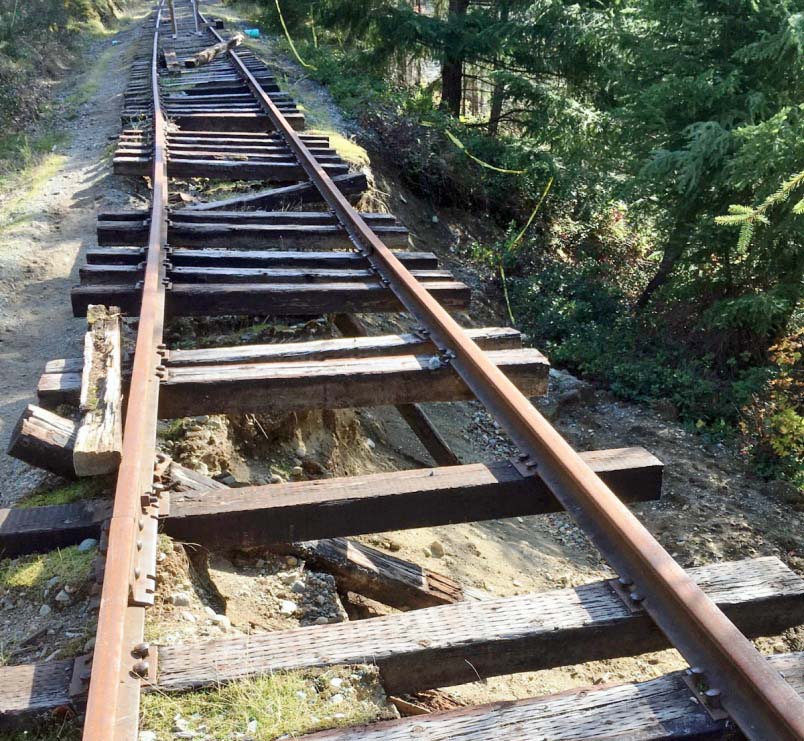
Vancouver Island British Columbia - It is incredible how the Island Corridor Foundation continues to spin the fairy tale of a resurrected
rail service along the E&N rail corridor.
The recent tactic of offering tours to mayors along selected stretches of track should be questioned.
There are sections that can still support light and slow-moving vehicles as were used for the tours.
A proper inspection of the complete corridor would provide a more realistic conclusion.
Contrary to what the foundation's CEO states, the tracks are falling apart.
The increasing uncertainty around funding, along with First Nation legal challenges, make it quite unlikely that rail service will be restored.
Perhaps that is as it should be.
Many of us fondly remember the whistle and clatter of the old Dayliner.
A modern rail service might not be so benign.
Faster trains would require substantial fencing and controlled crossings along much of the route.
Those living near the tracks and drivers forced to wait at crossings would probably not welcome the necessary changes.
It is time to seriously challenge the Island Corridor Foundation about the reality of their vision.
Many think the corridor should be publicly owned and used as a trail.
This would provide a reasonably level path over the Malahat to Victoria (as opposed to the recently completed, but prohibitively steep, sections of the Great
Trail.)
Perhaps in a few decades, if the south Island continues to densify, some sort of commuter service along the corridor could be justified.
Maybe, by then, it might be a raised monorail above the trail.
Dave Hutchinson.
Re: "We'll Get a Railway Up and Running on Island Says Corridor Foundation," 30 Oct 2019.
How terrific to see the province finally seem to take the Esquimalt & Nanaimo Railway corridor seriously.
Until now, transportation policy in B.C. has reflected the wildly out-of-whack approach of people such as Robert Moses of New York City and Herbert Manzoni of
Birmingham, England.
Moses and Manzoni either ripped out rail infrastructure entirely or allowed it to deteriorate to appalling condition.
Then they invested all public funds in endless road expansion.
This just doesn't work.
The other problem is when rail projects become ensnared in ridiculous numbers of overpaid consultants.
This problem has befallen the High-Speed Rail project between Los Angeles and the San Francisco Bay area in California.
It started off with such promise and is now a bleak stereotype of inefficient bureaucracy.
Louis Guilbault.
provisions in Section 29 of the Canadian
Copyright Modernization Act.

